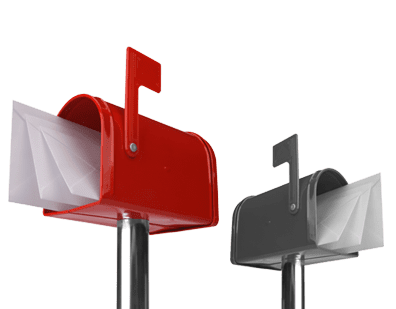I’ve recently begun using the analogy of Google Earth when helping my students plan their practice.
For those of you who haven’t used Google Earth before, it’s a free satellite imaging program that allows a user to zoom in on any area of the Earth, starting with a view of the Earth as if you were in outer space, and zooming right in on individual cars or buildings. The detail is quite stunning; it’s amazing technology that is well worth a look if you haven’t used it before (but be prepared for time to vanish while you’re immersed in it!).
You can check out Google Earth here.
Although Google Earth is a great piece of software, it’s not that directly useful for piano practice (except as a procrastination tool!). That said, I’ve found that the analogy of “zooming in” from outer space right up to the detail of someone’s letterbox, is one that will resonate with students when they need to find trouble-spots in their pieces.
I’ve found that all too often during practice, students neglect to “zoom in” and work on the real source of their problems in a piece. This leads to the wholly unproductive practice of playing bits they already know well (often the beginning) and playing through known trouble spots just hoping that they will get better with repetition.
As I repeatedly tell my students in lessons, mindless repetition is a waste of their valuable time.
Instead, I ask them to think like Google Earth while they play through a difficult part of a piece.
The whole piece represents the Earth from space, a country might represent a movement, their state might be a page, a line of music might be the city, their street one phrase and the problem area is no more than their letterbox!
The challenge: concentrate and zoom in enough to find the letterbox in their piece!! This may just be a bar’s worth of music at a time.
 Find the letterbox!
Find the letterbox!Once the location of the letterbox is identified precisely, we can work out what the difficulty is.
More often than not, it’s hands not moving fast enough to a new position, or if they are, landing in the wrong spot. Perhaps it’s an awkward fingering that needs adjusting or the left hand simply not knowing what it’s doing.
I give them some practice techniques at this letterbox level for a few minutes before we zoom out just slightly to their street frontage level. They instantly realise that this means adding just the one or two beats before, and then the one or two beats after the trouble-spot, and playing through that level of zoom.
This eliminates the next most common practice mistake: neglecting to effectively join the trouble-spot back into the rest of the phrase.
Using this analogy, you can help students keep zooming in and out of pieces as required.
My hope is that students will realise that by “zooming-in” and fixing problems at the letterbox level in their pieces, their practice will be far more effective, they will achieve their practice goals faster and thus have more time for all those important things like Facebook and computer games!
What are you best little tips like this for prompting students to practice effectively?

Shauna says:
Wonderful analogy. I’m making copies for my teen and adult students.
Bradley A Sowash says:
Great analogy. It works with improvisation too only the letterbox is confining oneself to just one creative concept. For example, a student who is stuck improvising only with a blues scale is limited temporarily to playing only chord tones. Zooming in on chord tones highlights their use and then zoom back out to add it to the creative bag of tricks.
Susan Ogden says:
Interesting analogy. Yes I encourage pupils to look at the design elements the composer has used. Does the composer use chromatic runs? If so then practice chromatic scales. Are there lots of chords? Then practice the chords sequentially as written in the piece. Turn them into a tune playing just the chords and making up a rhythm . Then build on this work by playing the difficult section until it gets easier. There may need to be several iterations of the technique development exercises followed by playing the difficult passage. I do tell students that this speeds up learning and is more interesting as they are having to analyse the problem and apply problem solving strategies.
Tim Topham says:
Hey Susan – that sounds like a great approach. It’s similar to Paul Harris’ Simultaneous Learning approach: explicitly teaching the ‘ingredients’ that make up a piece of music. The creative aspect of making things up based on ideas in the piece is just brilliant and something I enjoy doing regularly with students. It’s such a good way to explore music in more depth. Keep up the great work.
Roni Rothwell says:
Hi Tim. I have already been using this method for ages, but I LOVE the analogy, especially “find the letter box”. Maybe every pupil could decide what their problem area will be in their house (door bell/ flower pot/ bedroom window…) Thanks for the idea and permission to adopt it!
Roni
Tim Topham says:
You’re welcome Roni – I love your slight variation. Go with it and let us know how it develops.
Sue says:
Hey Tim
Just wanted to tell you I used Google earth zoom with my students all day! We laughed a lot especially when I cynically used the Phrase ” I think google got that one wrong”. The kids loved that when a mistake was made. Thanks for the tip!
Tim Topham says:
Hey Sue! Totally love it and thanks so much for sharing. I hope others have been trying it out too 🙂
Maggie Peter says:
This really explains what students need to do. I will certainly use this with my students. Thank you.
Tim Topham says:
Thanks Maggie 🙂
Paul Myatt (ForteMusic) says:
Excellent analogy Tim and bound to encourage students to Zoom in on the trouble spots!
Tim Topham says:
Cheers Paul!
Our Top 10 blog posts! « Tim Topham says:
[…] “Google Earth” Practice […]
graham fitch says:
This is an excellent analogy of what we need to do in our practising, and is bound to bring it alive to youngsters!